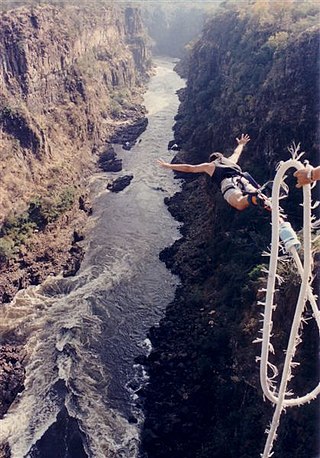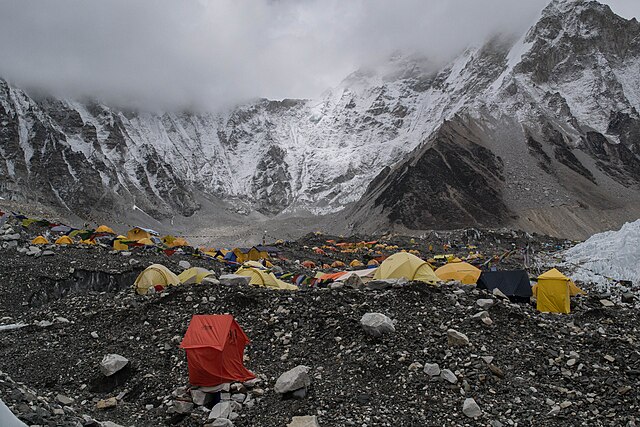Extreme tourism
Class of tourism From Wikipedia, the free encyclopedia
Extreme tourism, also often referred to as danger tourism or shock tourism (although these concepts do not appear strictly similar) is a niche in the tourism industry involving travel to dangerous places (mountains, jungles, deserts, caves, canyons, etc.) or participation in dangerous events. Extreme tourism overlaps with extreme sport. The two share the main attraction, "adrenaline rush" caused by an element of risk,[1] and differ mostly in the degree of engagement and professionalism.


Well-known extreme tourist destinations include:
- Chernobyl tours – Ukraine[2][3]
- Swimming in the Devil's Pool in Victoria Falls – Zambia and Zimbabwe[4][5]
- Hiking the Chang Kong Cliff Road on Mount Hua – China[4][5]
- Yungas Road tours – Bolivia[4]
- Green Zone – Baghdad, Iraq[6]
- Sac Actun tours – Riviera Maya, Mexico[4]
- Cave of Swallows – Mexico[4]
- Pole of Cold – Oymyakon, Yakutia, Siberia[citation needed]
- Wreck of the Titanic – Atlantic Ocean[7]
- Mount Everest – Nepal
- North Korea
- Yemen
- Afghanistan
- Russia (2022-onwards) [citation needed]
- Ukraine (2022-onwards)
- Belarus (2022-onwards) [citation needed]
- Venezuela
- Iran
- Iraq
- Somalia
- Space tourism[7]
See also
References
External links
Wikiwand - on
Seamless Wikipedia browsing. On steroids.
